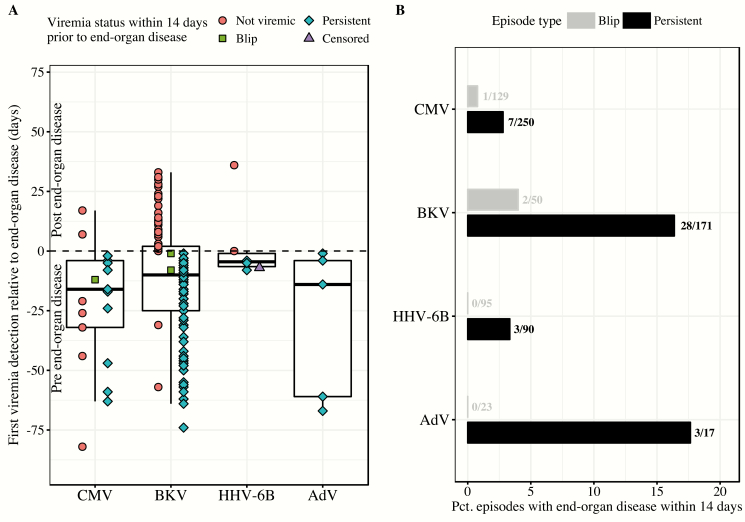Figure 2.
The temporal relationship of end-organ disease with virus detection and episode type among viremic patients. A, The distribution of first plasma virus detection and episode type relative to end-organ disease diagnosis among patients with viremia and end-organ disease during the study period. Boxes represent the interquartile range (IQR), and whiskers extend to within 1.5 times the IQR of the first and third quartiles (Tukey box plot). Shapes depict episode type and whether the episode occurred within a 14-day window preceding end-organ disease diagnosis. Circles depict start date of episodes in which virus detection occurred outside a 14-day window prior to end-organ disease diagnosis. Most end-organ disease diagnoses had episodes (square and diamond shapes) within a 14-day window prior to disease: cytomegalovirus (CMV), 62%; BK polyomavirus (BKV), 68%; human herpesvirus 6B (HHV-6B), 67%; adenovirus (AdV), 100%. B, The percentage of blip or persistent viremia episodes preceding end-organ disease cases within 14 days. Fractions indicate the number of end-organ disease cases occurring within 14 days after episode onset (numerator) over the total number of episodes (denominator). For 1 HHV-6B case, first plasma detection and end-organ disease diagnosis date were the same; we classified this episode as a nonpreceding episode. In the single case of Epstein-Barr virus (EBV) end-organ disease, the patient never had EBV detected in plasma.

